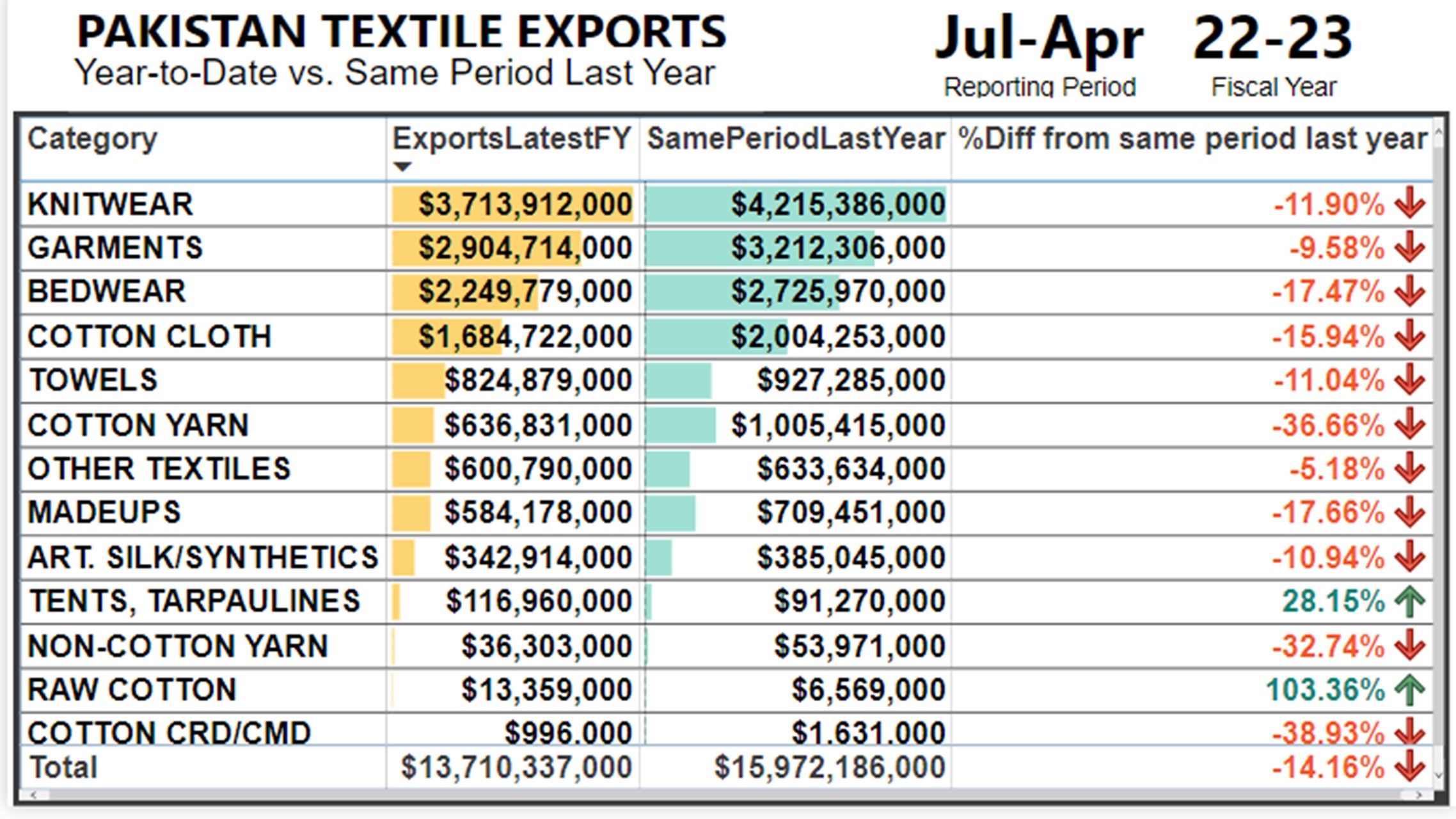According to the latest data released by the Pakistan Bureau of Statistics (PBS), Pakistan’s textile exports have experienced a significant decline of approximately 14% during the 10-month period of fiscal year 2023, dropping to $13.7 billion, which marks a substantial decrease from the previous year’s figure of $15.97 billion. The table below shows the exports of different textile categories in the latest fiscal year (July 2022 – April 2023), compared to the same period in the previous year (July 2021 – April 2022), and the percentage difference between them.
The data shows that most of the textile categories have experienced a decline in exports in the latest fiscal year compared to the same period last year. The largest decline was seen in the export of carded/combed cotton (-38.93%), followed by cotton yarn (-36.66%), non-cotton yarn (-32.74%), made-ups (-17.66%), and bedwear (-17.47%). These categories are mainly dependent on raw materials such as cotton and yarns which have become more expensive and scarce due to various factors such as lower production of cotton in Pakistan and higher demand from countries like China.
On the other hand, some textile categories have shown an increase in exports in the latest fiscal year compared to the same period last year. The most notable increase was seen in raw cotton exports (103.36%), followed by tents/tarpaulins (28.15%). These categories are mainly driven by the demand from international markets such as China and the Middle East for raw cotton and emergency relief items.
Overall, Pakistan’s textile exports have declined by -14% in the latest fiscal year (July 2022 – April 2023), compared to the same period in the previous year (July 2021 – April 2022). This decline was mainly due to the economic slowdown in the US and Europe, which are Pakistan’s major export destinations. Other possible reasons for the decline in Pakistan’s exports include political and economic instability, a decrease in buyer’s trust in timely deliveries from Pakistan due to the volatile politico-economic situation, a reduction in the number of orders, the closure of some manufacturing units, restrictions on the import of raw materials, a power crisis, and inconsistent Government policies.
Pakistan’s textile sector is a vital part of its economy and society, providing employment, income, and foreign exchange. The sector has shown resilience and adaptability in the face of the Covid-19 pandemic and other challenges. However, it also needs to embrace change and transformation to meet the evolving needs and expectations of the global market. The industry needs to invest in achieving operational excellence, innovation, diversification, value addition, and compliance with environmental and social standards to remain competitive and sustainable in the long run.



